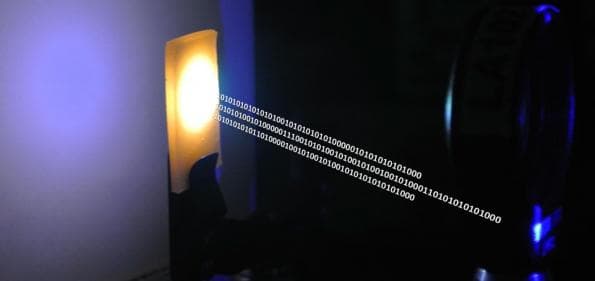Nanocrystals To Offer 2GB Data Speed Per Second Combined With Energy Efficient Light
While we cannot deny the vast improvement of recent technologies based upon the foundation of LASER innovation, we must not stop our minds to speculate over the range of possible discoveries that could be channelized using the same coherent light sources. A KAUST research team has recently devised a nanocrystalline material-made converter that could power wireless data transmission in a whopping rate of 2 GB/second.
Conventional technology such as Wi-Fi and Bluetooth had already captured the market, however, they have left a big room for improvement corresponding to their system methodologies. The visible light communication (VLC) variant uses a significant section of visible spectrum which is energy efficient in nature. Also, it helps to couple illumination with data transmission. As a result, a ceiling light now could provide internet connection for a laptop.

The aforementioned application is mostly achieved with the help of a series of diodes to get white light as an output. A blue-light-emitting diode in combination with phosphorous could change the output color to red and green. Although the conversion works, the method proves to be sluggish with respect to LED - ON and OFF switching.
According to the KAUST professor Boon Ooi, the process of light conversion finally sports a speed of one hundred million bits per second. His team wanted to bring a revolution and came up with a nano-sized crystal based converter which enables a greater amount of data. Structured to possess an 8-nanometer dimension, cesium lead bromide coupled with nitride phosphor acted as a converter. If the blue light is fed to the system, the nanocrystals emanated green light where the nitride features a red light. In total, the whole system gives a white light, technically proving optics properties.
Putting a mathematical analysis, the properties merged with their system, were judged under the femtosecond transient spectroscopy technique. It was proven that the method igniting the optical phenomena inside the nanocrystals had just taken 7 nano-seconds, modulating the optical data emission at 491 Megahertz. Significantly faster by 40 times, the requirements were accomplished due the nanosized crystal and spatial confinement. The team hopes that one-day semiconductor LASERs will be able to replace the LED white-light bulbs as the new one surpasses the former in energy-efficient lighting plus data transmission rate. The research has been published in ACS Photonics.
Source: #-Link-Snipped-#
Conventional technology such as Wi-Fi and Bluetooth had already captured the market, however, they have left a big room for improvement corresponding to their system methodologies. The visible light communication (VLC) variant uses a significant section of visible spectrum which is energy efficient in nature. Also, it helps to couple illumination with data transmission. As a result, a ceiling light now could provide internet connection for a laptop.

The aforementioned application is mostly achieved with the help of a series of diodes to get white light as an output. A blue-light-emitting diode in combination with phosphorous could change the output color to red and green. Although the conversion works, the method proves to be sluggish with respect to LED - ON and OFF switching.
According to the KAUST professor Boon Ooi, the process of light conversion finally sports a speed of one hundred million bits per second. His team wanted to bring a revolution and came up with a nano-sized crystal based converter which enables a greater amount of data. Structured to possess an 8-nanometer dimension, cesium lead bromide coupled with nitride phosphor acted as a converter. If the blue light is fed to the system, the nanocrystals emanated green light where the nitride features a red light. In total, the whole system gives a white light, technically proving optics properties.
Putting a mathematical analysis, the properties merged with their system, were judged under the femtosecond transient spectroscopy technique. It was proven that the method igniting the optical phenomena inside the nanocrystals had just taken 7 nano-seconds, modulating the optical data emission at 491 Megahertz. Significantly faster by 40 times, the requirements were accomplished due the nanosized crystal and spatial confinement. The team hopes that one-day semiconductor LASERs will be able to replace the LED white-light bulbs as the new one surpasses the former in energy-efficient lighting plus data transmission rate. The research has been published in ACS Photonics.
Source: #-Link-Snipped-#
0
